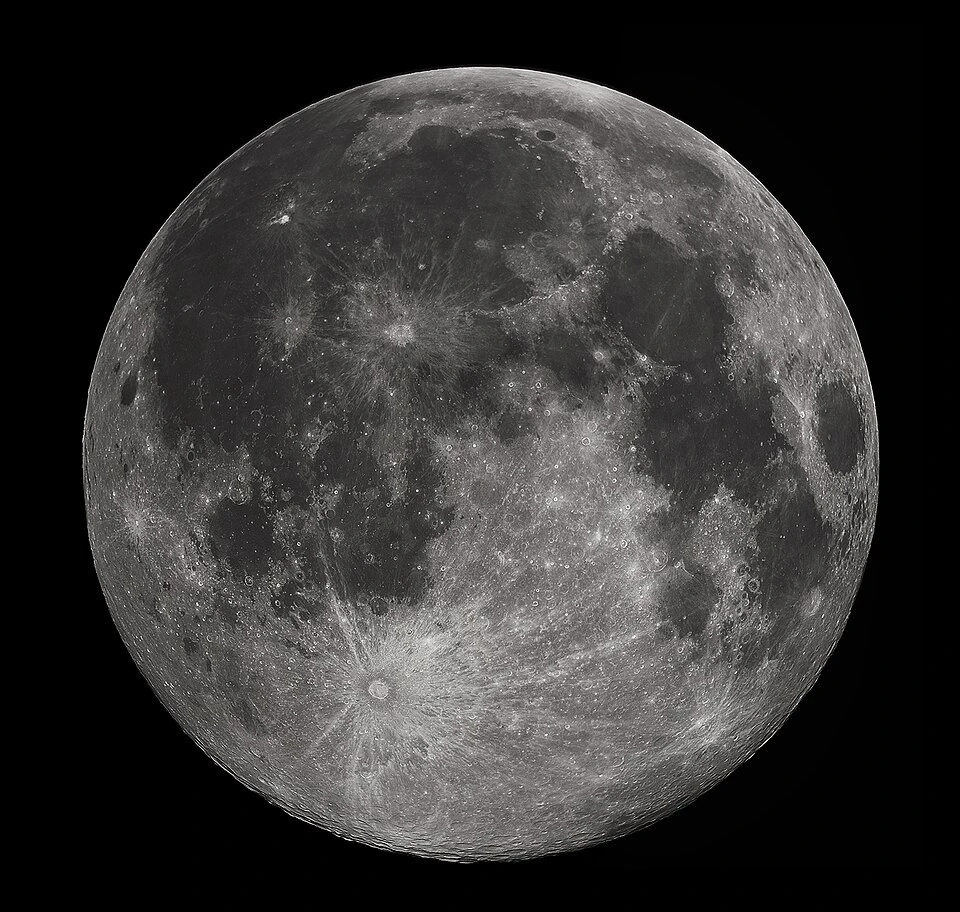
The Moon Blink Phenomenon, a captivating optical illusion, has fascinated skywatchers and scientists for centuries. This intriguing effect, where the moon appears to flicker or pulse, sparks curiosity about our closest celestial neighbor. Unlike a steady glow, the moon seems to dance with subtle changes in brightness, leaving observers puzzled. In this article, we’ll explore the science, history, and cultural significance of the Moon Blink Phenomenon, shedding light on why it occurs and what it reveals about our universe.
What Is the Moon Blink Phenomenon?
The Moon Blink Phenomenon refers to the perceived flickering or pulsating of the moon’s light when observed under specific conditions. For instance, on clear nights with turbulent air, the moon’s surface may appear to shimmer, creating an illusion of movement. This effect is not a physical change in the moon itself but rather a result of Earth’s atmosphere and human perception working together. As a result, the phenomenon has sparked both scientific inquiry and imaginative folklore.
Atmospheric turbulence, often caused by varying air temperatures or wind patterns, distorts the light traveling from the moon to our eyes. Consequently, this distortion creates a twinkling effect, similar to what we observe with stars. However, the moon’s larger apparent size makes this flickering less noticeable unless conditions are just right. For example, during a full moon near the horizon, the effect becomes more pronounced due to the thicker layer of atmosphere the light must pass through.
The Science Behind the Moon Blink
To understand the Moon Blink Phenomenon, we must first examine how light behaves. Moonlight, which is reflected sunlight, travels through Earth’s atmosphere before reaching us. Along the way, layers of air with different densities bend the light, a process called refraction. When the atmosphere is turbulent, these layers shift rapidly, causing the light to waver. As a result, the moon appears to flicker or pulse.
Atmospheric Influence
The atmosphere acts like a lens, bending and scattering light. For instance, when warm and cool air masses mix, they create pockets of varying density. These pockets distort the moonlight, leading to the characteristic shimmer of the Moon Blink. Additionally, humidity and dust particles can enhance the effect, making it more visible on certain nights. In contrast, calm, clear nights with stable air reduce the phenomenon’s intensity.
Human Perception
Our eyes and brains also play a role. The human visual system is sensitive to changes in light intensity, especially in low-light conditions. When the moon’s light fluctuates due to atmospheric distortion, our brains interpret this as a pulsing or blinking effect. Moreover, staring at the moon for extended periods can amplify this illusion, as our eyes adjust to the brightness and contrast.
Historical Observations of the Moon Blink
Throughout history, people have noticed the Moon Blink Phenomenon and woven it into their stories. Ancient astronomers, for example, recorded instances of the moon appearing to flicker, often attributing it to divine or supernatural causes. In medieval Europe, some believed the moon’s pulsing was a sign of impending change, while others saw it as a celestial dance.
Early Scientific Records
By the 17th century, astronomers like Galileo began studying the moon more systematically. They noted that atmospheric conditions affected observations, though they lacked the tools to fully explain the Moon Blink. Later, in the 19th century, scientists like John Herschel linked the phenomenon to atmospheric turbulence, laying the groundwork for modern understanding.
Cultural Interpretations
Different cultures interpreted the Moon Blink in unique ways. For instance, some Native American tribes viewed it as a sign of the moon communicating with the Earth. Similarly, in ancient Chinese folklore, the flickering moon was thought to reflect the emotions of the lunar goddess Chang’e. These stories highlight how the phenomenon captured human imagination long before science provided answers.
Conditions That Enhance the Moon Blink
Not every night offers a clear view of the Moon Blink Phenomenon. Specific conditions make it more likely to occur. For example, the effect is most noticeable when the moon is low on the horizon, where its light passes through a thicker layer of atmosphere. Additionally, turbulent weather, such as after a storm, can intensify the flickering.
Optimal Viewing Times
The best time to observe the Moon Blink is during a full moon or near-full phases, as the moon’s brightness makes the effect more apparent. Furthermore, rural areas with less light pollution provide clearer views. If you’re planning to watch, choose a night with mild winds and fluctuating temperatures, as these conditions amplify atmospheric turbulence.
Tools for Observation
While the naked eye can detect the Moon Blink, binoculars or a small telescope can enhance the experience. These tools magnify the moon’s surface, making subtle changes in brightness more noticeable. However, avoid over-magnification, as it can blur the effect. Instead, use low-power settings to maintain clarity.
The Moon Blink in Modern Astronomy
Today, astronomers study the Moon Blink Phenomenon to better understand Earth’s atmosphere. By analyzing how moonlight distorts, scientists gain insights into atmospheric dynamics, which can improve weather forecasting and climate models. Moreover, the phenomenon serves as a reminder of how interconnected our planet is with the cosmos.
Applications in Science
The Moon Blink has practical applications beyond astronomy. For instance, engineers designing optical systems, like telescopes or satellite cameras, must account for atmospheric distortion. By studying the phenomenon, they develop technologies to counteract these effects, ensuring clearer images of distant objects.
Educational Value
The Moon Blink also serves as an engaging teaching tool. Schools and planetariums use it to introduce students to concepts like light refraction and atmospheric science. By observing the moon’s flicker, students learn how everyday phenomena connect to broader scientific principles. As a result, the Moon Blink becomes a gateway to exploring the universe.
Debunking Myths About the Moon Blink
Despite its scientific explanation, the Moon Blink Phenomenon has fueled myths and misconceptions. For example, some people believe it’s caused by the moon itself changing brightness, rather than atmospheric effects. Others link it to extraterrestrial activity or cosmic events. However, science clearly shows that the phenomenon results from Earth-based factors.
Common Misunderstandings
One common myth is that the Moon Blink only occurs during specific lunar phases. In reality, it can happen any time the moon is visible, though it’s more noticeable during brighter phases. Another misconception is that the effect requires rare conditions. In fact, mild atmospheric turbulence, common in many regions, is often enough to trigger it.
Separating Fact from Fiction
To clarify, the Moon Blink is not a sign of lunar activity or alien signals. Instead, it’s a natural interplay of light, atmosphere, and perception. By understanding these factors, we can appreciate the phenomenon without falling for unfounded theories. For instance, comparing it to the twinkling of stars helps demystify the effect.
How to Observe the Moon Blink Yourself
Ready to witness the Moon Blink Phenomenon? It’s easier than you might think. First, check the lunar calendar for a full or near-full moon. Next, find a location with minimal light pollution, such as a park or countryside. Then, observe the moon when it’s low on the horizon, ideally through binoculars for a closer look.
Step-by-Step Guide
- Choose the Right Night: Aim for a clear night with a bright moon. Check weather forecasts for turbulent conditions, like mild winds or temperature shifts.
- Find a Dark Spot: Avoid city lights to reduce glare. Rural areas or open fields work best.
- Use Binoculars or a Telescope: Low-power optics enhance the effect without distorting the view.
- Be Patient: Stare at the moon for a few minutes. The flicker may take time to become noticeable.
- Take Notes: Record what you see, including weather conditions and the moon’s position, to compare with future observations.
Tips for Success
Patience is key. The Moon Blink can be subtle, so give your eyes time to adjust. Additionally, avoid bright screens before observing, as they can reduce your night vision. Finally, invite friends or family to share the experience—it’s a great way to spark curiosity about the cosmos.
The Moon Blink in Popular Culture
The Moon Blink Phenomenon has inspired artists, writers, and filmmakers. For example, poets often describe the moon’s flicker as a symbol of mystery or change. Similarly, science fiction stories sometimes use the effect to hint at otherworldly forces. Even today, photographers capture the phenomenon to create stunning lunar images.
Artistic Inspirations
In literature, the Moon Blink often represents fleeting beauty or hidden truths. For instance, Romantic poets like Shelley used it to evoke the sublime nature of the cosmos. In visual art, painters depict the moon’s shimmer to convey emotion or atmosphere, blending science with creativity.
Modern Media
In films and video games, the Moon Blink adds a touch of realism to night scenes. Directors use it to create immersive environments, while game designers incorporate it to enhance visual effects. As a result, the phenomenon remains a subtle but powerful element in storytelling.
Looking Ahead: The Future of Moon Blink Studies
As technology advances, our understanding of the Moon Blink Phenomenon continues to evolve. New telescopes and imaging systems allow scientists to study atmospheric effects with greater precision. Moreover, citizen scientists contribute by sharing observations, helping researchers map global patterns of the phenomenon.
Technological Innovations
Future telescopes may use adaptive optics to correct for atmospheric distortion, reducing the Moon Blink’s impact on observations. Additionally, satellite-based sensors could monitor atmospheric conditions in real time, providing data to predict when the effect will be most visible.
Citizen Science Opportunities
Anyone with a smartphone or camera can contribute to Moon Blink research. By uploading photos and notes to platforms like citizen science apps, you can help scientists track the phenomenon worldwide. Consequently, your observations could shape the future of atmospheric studies.
In Closing
The Moon Blink Phenomenon is more than just a celestial curiosity—it’s a window into the interplay of light, atmosphere, and human perception. By exploring its science, history, and cultural significance, we gain a deeper appreciation for the universe’s wonders. As we move forward, let’s continue observing, questioning, and sharing our discoveries. After all, the Moon Blink reminds us that even familiar sights can hold surprises. What will you see the next time you gaze at the moon?

Leave a Reply